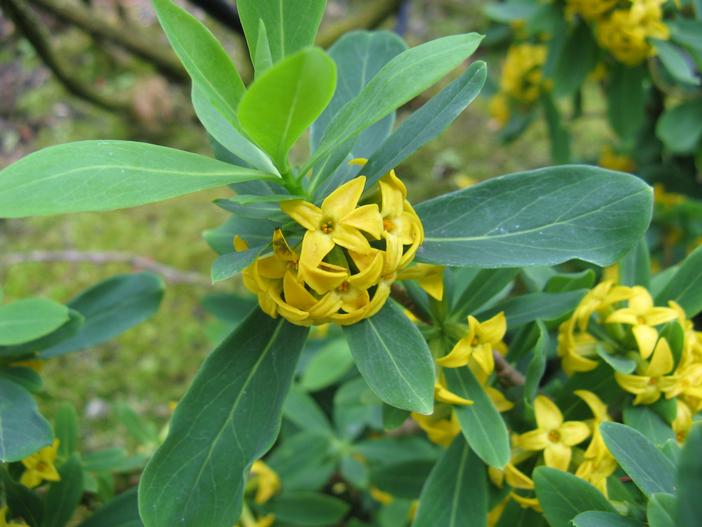February Daphne
(Daphne pseudomezereum)
February Daphne (Daphne pseudomezereum)
/
/

KENPEI
CC BY-SA 3.0
Image By:
KENPEI
Recorded By:
Copyright:
CC BY-SA 3.0
Copyright Notice:
Photo by: KENPEI | License Type: CC BY-SA 3.0 | License URL: http://creativecommons.org/licenses/by-sa/3.0/ | Uploader: KENPEI | Publisher: Wikipedia Commons

















Estimated Native Range
Summary
Daphne pseudomezereum, commonly known as February Daphne, is a semi-evergreen shrub native to the understory of deciduous forests and forest edges in Honshu, Japan, and Korea. It typically grows to a height of 3 feet (0.9 meters) and has a similar spread. February Daphne is characterized by its clusters of fragrant, pale pink to purple flowers that bloom in late winter to early spring, around March and April, before the leaves emerge. The flowers are quite showy and are followed by red berries that are attractive but toxic. The plant is deciduous in summer, shedding its leaves in regions with hot summers, while some Korean variants are winter-deciduous, losing their leaves in the cold season.
February Daphne is valued for its early spring flowers, which can bring color and fragrance to the garden when few other plants are in bloom. It is often used in border plantings, as a foundation shrub, or in woodland gardens. The plant prefers partial shade to full sun, well-drained soil, and does not tolerate waterlogged conditions. It requires little maintenance once established but can be susceptible to root rot if overwatered. There are no widely known popular cultivars, but the species itself is sought after for its early flowering habit. Potential problems include susceptibility to viral diseases and pests such as scale insects. It should be noted that all parts of the plant are poisonous if ingested, and care should be taken when handling, as the sap can cause skin irritation.CC BY-SA 4.0
February Daphne is valued for its early spring flowers, which can bring color and fragrance to the garden when few other plants are in bloom. It is often used in border plantings, as a foundation shrub, or in woodland gardens. The plant prefers partial shade to full sun, well-drained soil, and does not tolerate waterlogged conditions. It requires little maintenance once established but can be susceptible to root rot if overwatered. There are no widely known popular cultivars, but the species itself is sought after for its early flowering habit. Potential problems include susceptibility to viral diseases and pests such as scale insects. It should be noted that all parts of the plant are poisonous if ingested, and care should be taken when handling, as the sap can cause skin irritation.CC BY-SA 4.0
Plant Description
- Plant Type: Shrub
- Height: 3-5 feet
- Width: 3-5 feet
- Growth Rate: Moderate
- Flower Color: Yellow
- Flowering Season: Spring
- Leaf Retention: Deciduous
Growth Requirements
- Sun: Full Sun, Part Shade
- Water: Medium
- Drainage: Slow
Common Uses
Bee Garden, Border Plant, Fragrant
Natural Habitat
Understory of deciduous forests and forest edges in Honshu, Japan, and Korea
Other Names
Common Names: False Spurge Laurel
Scientific Names: , Daphne pseudomezereum, Daphne japonica, Daphne pseudomezereum var. pseudomezereum,
GBIF Accepted Name: